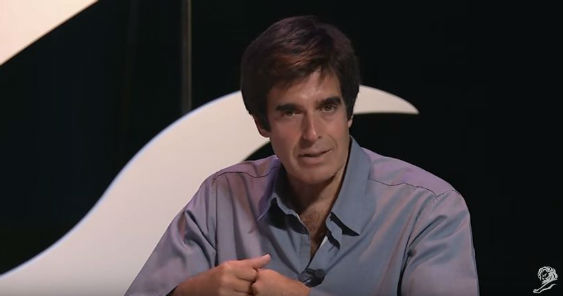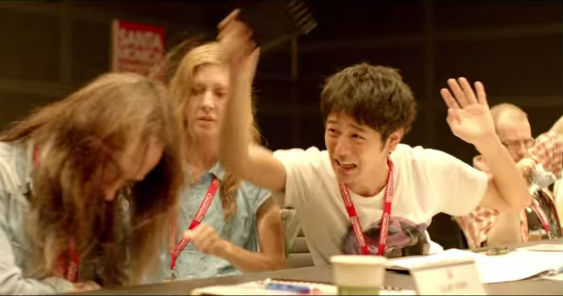In our Jan-Feb 2012 issue, Cid Reyes pays tribute to the women of advertising in his column, The Bigger Picture.
Move over Mad Men, it’s time to honor the Mad Women.
Thus exhorted CBC’s season five of the Age of Persuasion, which aired in the US in March 2011. The show lauded the Great Women of Advertising – “The Hall of Famers who broke the rules, kicked open the doors and created some of the most famous advertising of our time…" Because they have no credits, you never know when they were written by women. Yet some of the most famous advertising campaigns have, in fact, been created by extraordinary women.
Widow Weil gets the ball rolling
The first ad woman (or Mad Woman) on record was Mathilde C. Weil. She moved from Germany to New York in 1870. Not long after, her husband died, leaving her with no means of support. So she began booking magazine space for a friend, then decided to start her own agency, called The M.C. Weil Agency.
She had a knack for understanding what periodicals women liked to read, and was wildly successful. She died in 1903, and left behind a sizable fortune. But good old Mathilde was the first woman to hand out an ad shingle, and inspired many other women.
Across town in New York, an enterprising couple named Stanley and Helen Resor were growing an agency named J. Walter Thompson. Stanley had brought the company from its namesake in 1916, and ran the company. Helen was the creative director.
Stanley and Helen knew one thing: The major purchasers of goods and services were women, and that this market could be expanded. So Helen formed the Women’s Editorial Department – a creative group comprised solely of women. Soon, these women were overseeing 75% of the company’s clients and billings – and the agency was the biggest in America at the time. One of the most famous ads Helen created was for Woodbury’s Facial Soap. It is credited as being the first time “sex” was used to sell a product.
Yes, Helen Resor brought sex to advertising in 1917, and it has reverberated every since. She also is credited with being the first to use nudity (albeit tastefully) in advertising with another print ad for Woodbury.
Helen Resor and her team would not only create landmark campaigns, but they helped define the “Happy Homemaker” imagery that Madison Avenue has used every since.
Following Weil’s footsteps
Another pioneering adwoman was Bernice Fitz-Gibbon. She specialized in retail advertising, and would go on to become the highest paid woman in advertising in the 1940s, earning over US$50,000 – or over $800,000 – in today’s dollars. She did groundbreaking and business-building work for Macy’s and Gimbels, and wrote a book about her colorful career.
Another Mad Woman pioneer was Phyllis Robinson. She was inspired by Fitz-Gibbon, and decided to make her career in advertising copywriting. She was hired by Bill Bernbach when he started his agency, and he named her copy chief. The agency Doyle Dane Bernbach turned out to be one of the most influential around and Robinson supervised some of the best, and toughest, admen of the era.
Their work together changed the entire industry, and they did it with campaigns for Volkswagen.
One of the copywriters that Robinson hired was Mary Wells. She was beautiful, creative and confident, and she would go on to create her own highly awarded agency called Wells Rich Green:
Within six months, her agency was one of the top 50 in the country. Their work was funny, strategic and memorable with commercials for Alka-Seltzer, Braniff, and the most famous campaign that turned around New York’s fortunes.
Another famous Mad Woman is Charlotte Beers. She rose through the ranks to become an account director in an era where there were almost no females in that position. Beers also had a knack for landing new business, and that ability didn’t go unnoticed. She became the first female vice president in J. Walter Thompson history, and was later tapped to become the president of Ogilvy & Mather in 1992.
She helped land the $500 million IBM account, and Fortune Magazine named her one of the most powerful women in America. Beers is in the 49th spot on the Top 100 Advertising People of All Time List, according to Advertising Age Magazine.
Mad Woman Linda Kapla-Thaler began her career at JWT, following in the distant footsteps of Helen Resor. There, she wrote the famous Toys ’R Us jingle that is still used more than 25 years later.
She left JWT to start her own agency in 1997, called the Kaplan-Thaler Group. The agency is largely managed by women, and as Kapla-Thaler says, “There’s enough estrogen around our offices to make Arnold Schwarzenegger ovulate.” Her agency has done a lot of great work, but probably the most famous is for insurer Aflac.
Lucy David: Philippine Grande Dame
The Philippines, of course, is not wanting of its own Grande Dames, (or Grande-Dames in the making.) A coffee-table book from 1989 – which is in need of updating – has a chapter on “Mavericks and Institutions”, where author Chit dela Torre identifies the pioneers who led the way for Philippine advertising by founding their own agencies. One agency was founded by Anthony O. David, in 1948 who named it Great Wall Advertising – after, of course, The Great Wall of China. The agency had its own peaks and valleys with new accounts won, and lost, and its subsequent rebirth. As dela Torre narrates: Great Wall was incorporated in 1973 with Anthony O. David as chairman of the board, and the late Joe Luna Castro, the journalist, as president. When in 1978, Castro returned to the Manila Times as editor, David’s wife, Lucy took over the presidency. Under her leadership, Great Wall became instrumental “in arousing the consciousness of the Filipino-Chinese business community to use advertising as an effective marketing tool. This is regarded as a solid accomplishment, knowing that the Chinese-Filipino advertisers are a hard nut to crack, in a manner of speaking.” A reluctant advertising practitioner at the beginning, Lucy David nonetheless worked for decades in the industry, her name and Great Wall becoming synonymous with each other, while inspiring many women to join the advertising profession.
Making Waves
In 1981, an all-woman advertising agency called Pan Pacific Advertising was organized primarily because it wanted to address the women in the country who are the biggest spenders.
Indeed, the 80s saw a number of women making waves in the industry. Interviews with dela Torre touched on various topics such as the advantages of being a woman, the hazards of the trade the burden of corporate responsibilities, and coping with male executives or colleagues, they shared their sentiments on the subjects:
“Ninety-nine per cent of the time, women, get what they want. And this is because women are better negotiators than men. First of all they have their charm, their charisma, their intuition especially about people. They can also be assertive in their own right.” – Clarita “Laling” Ordonez, president of Consult Asia Pacific.
“In handling pressures or emotionally explosive situations, men tend to be less patient and less cool, so women can be a stabilizing factor… Women give a different point of view since they are the ones deciding on purchases. They offer a different perspective which men do not normally perceive or appreciate.” – Lourdes M. Fajardo, first female president of Philippine Association of National Advertisers (PANA).
“Women are more natural crisis managers. Men are never home when baby falls down the staircase or swallows the diaper pins (he doesn’t bring home enough bacon to afford Pampers). Men need to unwind in watering holes after work. Mom goes straight home to face the stove and prepare the red carpet for Dad. Dad forgets to pay the rent or the electric bill so Mom needs to be a better cash flow manager. Dad brings home six colleagues and instant dinner must be served, etc. Is it any wonder many women are really such wonderful decision-makers, treasurers, fund-raisers?”
– Mary Jean Chua, ad manager for Asia Week
“I really became painfully aware of the handicap of my sex when I was attending an international Conference of JWT – not only was I the youngest, I was female and Asian.” – Yoly Ong, founder-chairman of Campaigns and Grey.
“There seems to be an unwritten law that a woman is incompetent unless proven otherwise. The problem is the first hurdle. If you’re able to take the first hurdle, then the rest is easy.” – Minda R. Lansang, VP for Media, JWT Philippines.
“While women are accepted as good creative people, most people are not used to women as administrators. People generally expected me to fail… Men are not used to entertaining bright ideas from women.” – Emily Abrera, president of McCann-Erickson Philippines, now chairman, Cultural Center of the Philippines
An encouraging future
The 80s were merely a portent of the decades to come when more and more women would enter and excel in advertising and marketing. A simple headcount of practitioners now will prove proves the case beyond any doubt. There are now the likes of Nancy Harrel, Yoly Ong, Emily Abrera, Julie Lingan in Malaysia, Eleanor Modesto in Indonesia, Abby Jimenez, Matec Villanueva, Susan Dimacali, Merlee Jayme, Chiqui Lara, Mariles Gustilo, Rikki Arches, Ompong Remigio, Tina Coscolluela, Mio Chiongson, Sockie Petargue, Teeny Gonzales, Claire Lopez Dytianquin, Liezl Maralag in media, Lorna Tabuena and Cherry Salazar in production, Carmencita Esteban in research, who have founded their own agencies or are heading multinationals.




